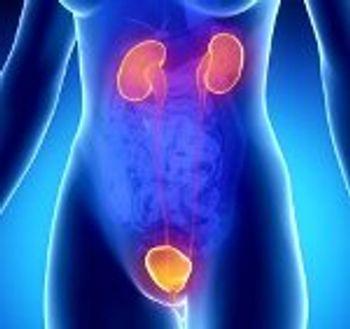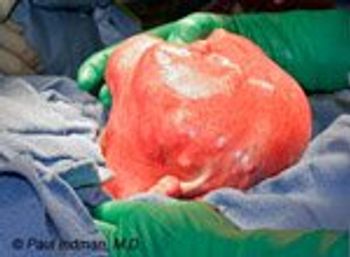
New research has found a link between day-of-surgery urinary microbiota and the likelihood of a urinary tract infection after pelvic floor surgery.

New research has found a link between day-of-surgery urinary microbiota and the likelihood of a urinary tract infection after pelvic floor surgery.

Our reviewer took two products for gynecologic surgeons for a test drive. Here's what he found.

An ADP-ribose polymerase (PARP) inhibitor has received accelerated approval from the US Food and Drug Administration (FDA) for treatment of women with heavily pretreated ovarian cancer associated with defective BRCA genes.

Women at risk of ovarian cancer and who are undergoing hysterectomy should be counseled about the possible benefits of salpingectomy, according to a new committee opinion from the American College of Obstetricians and Gynecologists.

On July 29, 2010, a 46-year-old obese primarily Spanish-speaking patient was admitted to a hospital by her private ob/gyn Dr. A for a total laparoscopic hysterectomy (TLH) and/or laparoscopically assisted vaginal hysterectomy (LAVH) that day.

The right combination of medication, physical therapy, and lifestyle changes may help patients with this sometimes stubborn condition.

From surgical staplers to birthing simulator updates, 2014 brought many new innovations for obstetrics and gynecology.

Addressing the emotional component of a patient's diagnosis isn't often feasible, but these tools can help patients with this important aspect of healing.

On December 10, 2014, the US Food and Drug Administration (FDA) approved Gardasil 9 (Human Papillomavirus [HPV] 9-valent Vaccine, Recombinant) for the prevention of certain diseases caused by 9 types of HPV.

For screening dense breasts, 3D digital mammography outperforms standard 2D mammography, according to results of a prospective trial of more than 25,000 women.

A California woman with a history of 2 premature deliveries and a single miscarriage became pregnant in 2004. A few days after the pregnancy was confirmed, she was seen by a physician at a military base in connection with an application to accompany her husband overseas. The application was approved and the patient went to Spain, where she delivered at 31 weeks’ gestation in 2005.

On November 25, the Food and Drug Agency (FDA) issued a warning against the use of laparoscopic power morcellators in the management of many women undergoing hysterectomy or myomectomy.

Understanding the usual clinical course of periviable PROM helps physicians guide families who are making difficult decisions.

For patients who have no adverse effects from anesthesia, who says there are no palatable post-surgical food options?

With this new FDA guidance, the group of women for whom laparoscopic power morcellation remains an appropriate treatment option is quite narrowed.

AAGL attendees are normally reserved, but on Wednesday they got on their feet to give an ovation to the doctor who engineered the first pregnancy in a woman with a transplanted uterus.

A panel of experts were bested only once at the “Stump the Professors” session at the 43rd AAGL Global Congress on Minimally Invasive Gynecology in Vancouver. A sarcoma was the diagnosis that got away among three complex cases presented to a packed audience.

An isolation bag for morcellation provides the best specimen containment, according to a study presented at AAGL.

Ever wonder about investing in 3D technology, the best candidates for LESS, and the utility of dual-function instruments? Here's one OB/GYN's opinion.

In this blog, one OB/GYN discusses her move from a hospital staff physician to a solo private practice, a decision that hasn't come without costs.

Two studies show that the emotional impact of uterine fibroids is significant but support is lacking, especially in African American women.

Studies of the impact of diet on risk of ovarian cancer are limited and their results unclear but a new report based on data from the Nurses’ Health Study (NHS) suggests a possible association between high intake of flavonoids and black tea and lower risk of the disease.

High doses of vitamin D may not help prevent recurrence of bacterial vaginosis (BV), according to results of a randomized controlled trial.

"Perhaps the last morcellator remaining in the market should be used to morcellate the tort system ..."

cfDNA gives insight into the pathogenesis of serious disease and early information about benign conditions.